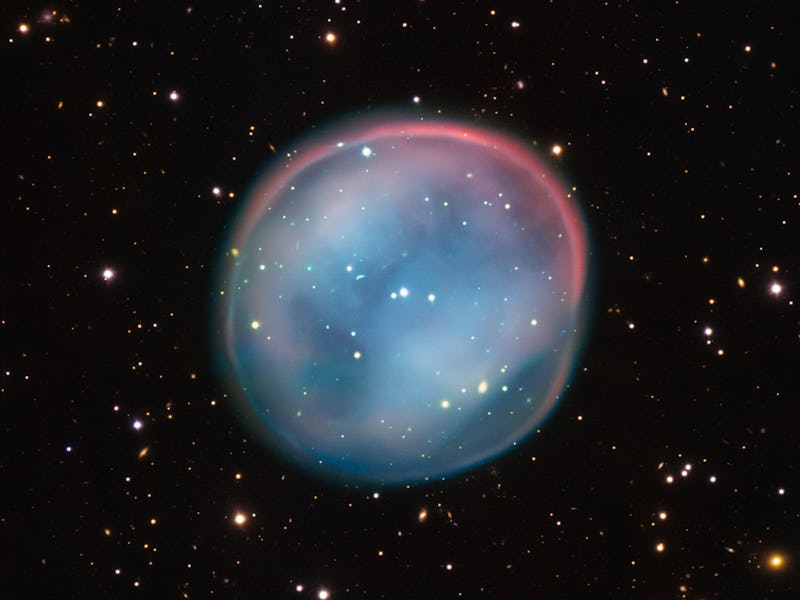New Nebula Pic Hints at What Our Sun Might Look Like
A glimpse of several billions of years into the future.

All good things have to end at some point, and our sun is no exception. After a little more than four billion years, the yellow ball of hot plasma will swell up into a weak red giant, after which it will will collapse into a dense white dwarf while the outer layers are flung outward and create a planetary nebula. And today, the European Southern Observatory shows us what that might look like.
The object above is ESO 378-1, AKA the Southern Owl Nebula. This newest picture was taken by the ESO’s Very Large Telescope in the Atacama desert in Chile. Although the Hubble Telescope has managed to capture some other images of ESO 378-1, the ESA’s latest is probably the most stellar thus far.
Planetary nebulas only last about 20,000 years — a mere fraction of a second when it comes to star lifetimes. The Southern Owl Nebula has grown out to four light-years in length and will continue to stretch until the gases disperse into something very different. There are perhaps 10,000 of these nebulas within our own Milky Way galaxy, but researchers have only discovered around 1,500 so far.
Our own sun is expected to follow this pattern and could very well end up looking like the Southern Owl Nebula in several billion years. Right now you get to enjoy a similar view without dealing with the extinction of all life as we know it, so count your blessings.
The sky around the planetary nebula ESO 378-1, the Southern Owl Nebula.